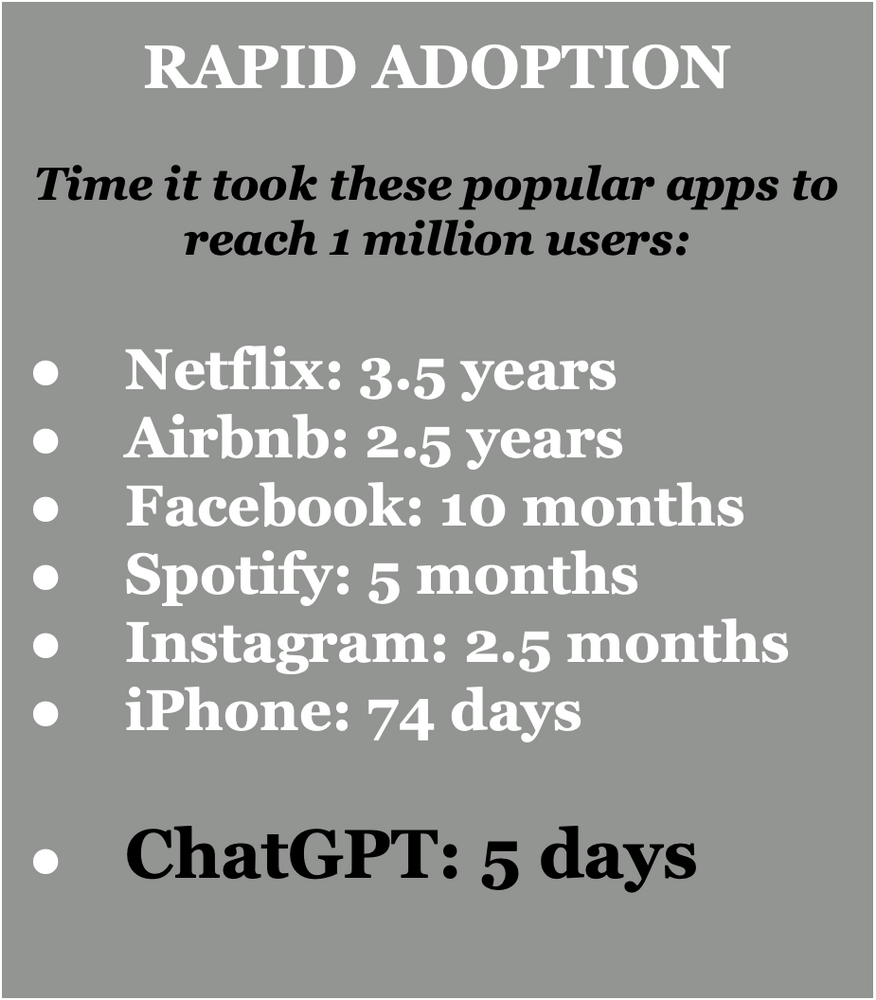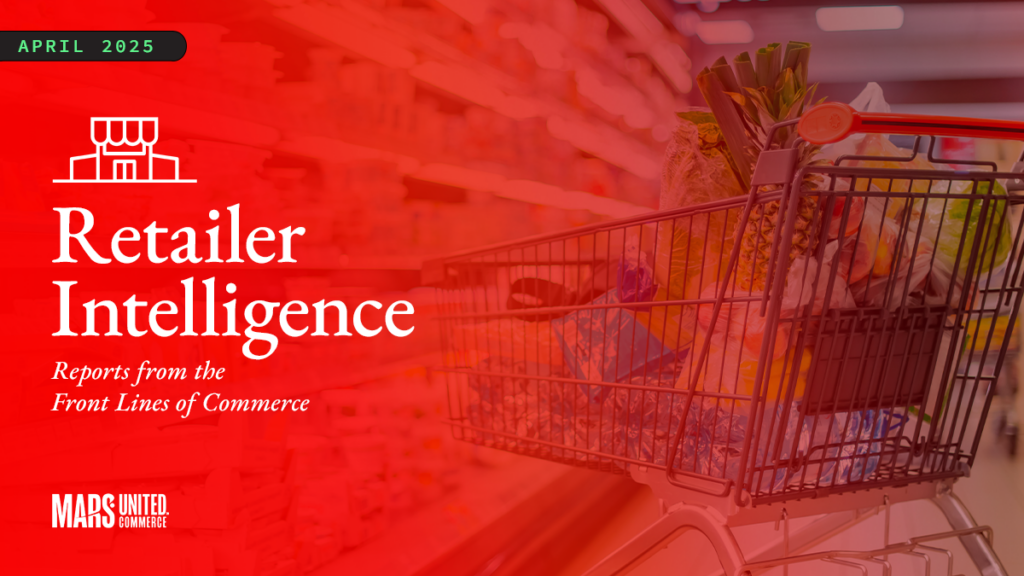By Julia Miller, The Mars Agency

Generative AI, the tech behind ChatGPT, is a specific type of artificial intelligence that’s focused on creating something new, such as text, images, or music, rather than searching for something that already exists such as insights from data.
Gen AI has already begun transforming how we live, work, collaborate and shop as human and machine intelligence converge to each deliver what it does best.
Humans have always been good at analyzing things, but machines are even better. Until recently, machines had no chance of competing with humans on creative work. In that regard, Gen AI is not perfect, and it relies on a blend of humans and machines working in tandem to create things better, faster, and more efficiently than has ever been possible.
Big Tech is already making multi-billion-dollar investments, fueled by startups proliferating the landscape as they get into the game, consumer adoption outpacing predictions, and Gen AI models themselves making tremendous advancements in a very short period of time — particularly when compared with the maturity curve of other emerging technologies (below, left).

What is driving this disruption? Is it sustainable? And for our industry, how should brands and retailers consider getting into the game?
This article will examine the current Generative AI landscape, unpack the direction Big Tech is heading, and begin outlining the opportunities that brands, retailers and shoppers have to revolutionize the connected commerce journey by adopting this revolutionary technology.
The Current Landscape
Big Tech is racing to capitalize on the disruption being generated by Gen AI, with numerous startups looking to gain traction. But the “Big 3” of Microsoft, Alphabet (Google) and Amazon are leading the charge.
Microsoft has invested billions in OpenAI, the startup behind art- and text-generating AI systems like ChatGPT, DALL-E 2, and GPT-4 models. They’ve already started deploying the technology behind ChatGPT into Office 365 and Bing, which will make it easier and more efficient for customers to use those products. At the same time, they’re preparing for the concurrent surge in computing power that Gen AI will bring by developing a proprietary AI chip to handle the large-language models (LLM) responsible for understanding and generating human-like language.

In March, Google released “Bard,” a public rival to ChatGPT, and is incorporating the technology into its productivity apps including Gmail and Google Docs. In addition, the tech giant is rolling out Gen AI tools to its suite of advertising products to deliver “unleashed creativity,” according to the company. Perhaps most importantly, Google has made moves to revolutionize the search industry — overhauling its world-leading search engine to not only scour existing content but to create new content when prompted as well.
Amazon took a different approach to joining the race by launching Bedrock, a new service offering customers an easy way to build Gen AI-powered apps via pre-trained models. This partnership model lets Amazon focus on building the infrastructure needed to accelerate Gen AI growth rather than creating its own model.
Commerce Use Cases
Numerous VC firms have mapped out the broader Gen AI landscape by grouping the various apps into different buckets based on their output across text, images, video, audio, code, and others. Using these models, The Mars Agency layered in potential commerce use cases for brands and shoppers.

Unpacking the Tech
To explore use cases for Gen AI, it’s important to have a fundamental understanding of the underlying technology and how the different layers work together to form the landscape.
Application: Applications are workflow tools in which humans and machines collaborate, providing an interface that lets users engage with underlying models. There currently are roughly 100 Gen AI apps in the landscape, but that number is expected to rise beyond 10,000 in just the next two years. ChatGPT, the chatbot app that OpenAI built on top of its GPT3.5 model, is the most well-known.
OS/API: This layer sits between the apps and the models discussed next, making models accessible to developers and users. When OpenAI released a ChatGPT plug-in in March, companies including Instacart and Snapchat were able to incorporate Gen AI into their own apps, helping remove complexity from meal planning and grocery shopping.
Model: This is the underlying technology and data sets on which the apps are built. Huge advancements in “general” models such as GPT-4 for text or DALLE-2 for images were made possible because of the data on which they were trained and their open-source access, which lets developers build on them. This is where the bulk of recent growth has been focused.
Also becoming more common are “specialized” models trained on narrow or proprietary data sets and designed to produce a more nuanced output. One recent example is NVIDIA’s partnership with Adobe, which will enable brands, retailers and other businesses to build custom models on top of their own first party data — supercharging the top-layer apps above them.
What Brands & Retailers Are Doing
Here are a few early examples:

- Nike and Adidas are working with startups to create 3D models of their products for use in creating virtual product catalogs.
- Coca-Cola is generating personalized ad copy and images at scale.
- True Religion is using its shopper data to continuously refine a loyalty program that will foster lifelong customers.
- Walmart is exploring self-built models to boost the customer experience — models that could sit underneath the retailer’s already-deployed “Text to Shop” service (at right), supercharging it with personalized recommendations based on past purchases and intent data.
- Shipt is improving search relevance by testing suggestions based on items already in the cart that build toward a recipe if the shopper is only a few ingredients away.
And here are some potential use cases for brands to consider:
Reinvent meal planning: Instacart’s ChatGPT Plug-in (below) lets shoppers create orders based on a prompt. Imagine asking, “I have chicken and pasta. What else do I need to make a kid-friendly meal?” and then letting ChatGPT add all the necessary ingredients to your cart (see below).
AI Personal Shopping Assistants: Help shoppers reimagine meal planning, list building, and discovering new products or usage occasions.
In-Store Personalization: Enhance the physical shopping experience through store navigation assistance, personalized service and other opportunities.

Website Personalization: Reduce the cost of personalizing web content through virtual photo shoots, personalized loyalty videos, and new product demos tailored to your audience’s interests and past purchases.
Hyper-personalized campaign creative: Imagine using AI to generate thousands of different audio scripts in realistic human voices — in a matter of seconds — to promote targeted offers that factor in ZIP code, real-time weather, inventory, and pricing data, and all driving to different retail locations?
Prepare for search, reimagined: From retailer.com to your own websites, start thinking about to leverage first-party data, purchase behavior and audience segmentation to effectively immerse your brand in new, personalized content that will drive greater consideration and, ultimately, conversion.
Hype or Here to Stay?
If Google’s plans to reinvent its core business model, consumers adopting at record-setting paces, and the views of tech’s founding fathers are any indication of the future, Gen AI is more than hype.
Bill Gates has called this era “The Age of AI,” likening the technology’s future impact to that of the personal computer, the internet, and the mobile phone. Even Elon Musk is behind Gen AI, recently promising to create this own model to rival those of Microsoft and Google.
One thing is certain. Things are moving so fast that companies can’t wait for perfection before entering the game. Brands and retailers who take a “fail forward” mentality will gain early insights and find new use cases, giving them a jump start on the future.

About the Author
As Group VP-Commerce Media at The Mars Agency, Julia Miller forges partnerships with media, data, and marketing technology providers that help clients and retailer partners build innovative connected commerce experiences throughout the shopper journey.
An 8-year veteran of the agency, she has more than 15 years’ experience bringing martech to life across the path to purchase. In 2022, Julia was named a Women of Excellence for Innovation by Path to Purchase Institute.



